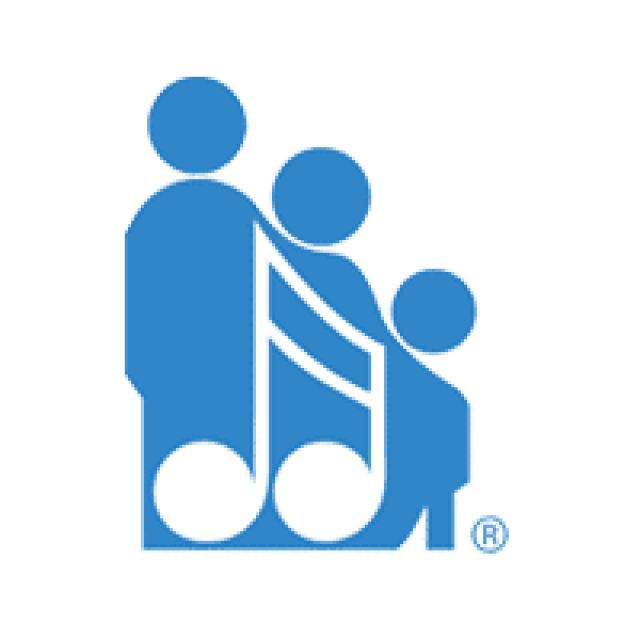By Sherry Luchette
The irony of learning to improvise is that it requires a vast amount of planning and preparation. As music educators, we can provide valuable opportunities for students of all ages and instruments to learn about improvisation. Creating a successful musical arena to try something new and feel safe doing it is key. Often, the subject of improvisation is overwhelming to students. There is so much information to learn that many students can become quickly discouraged, will shut down, and no longer want to try.
How do we create a successful, joyful experience for students learning how to improvise? In this article, I’ll share some initial strategies for creating musical parameters for students learning to improvise, and introduce these steps in systematic increments so that students can feel confident and empowered when improvising.
Creating a Structure
As with many aspects of teaching, beginning with a simple structure provides a strong starting point. In the world of jazz improvisation, the 12-bar blues form is an effective introduction. Even if you have never played jazz music, the blues form is incredibly useful to learn. A visual representation of the form (see the photo below) makes it easy for students to follow the progression and practice soloing exercises. It consists of three dominant seventh chords: I7, IV7, and V7. So, how can we use this form to teach improvisation to our students?
There are easy sequential steps that are flexible enough to tailor to your individual teaching situation. Let’s examine how this would break down and could be applied to various classes or individuals.
Introducing Movement
First on the list is movement. Whether or not students are old enough to play an instrument, movement is key for understanding a groove, steady pulse, phrasing, and developing listening skills. Younger elementary students (Pre-K to third grade) may or may not be studying an instrument, so starting with body movement and using a prop during an improvisation exercise can make it a lot of fun. When I first began teaching early childhood music classes, I thought just having students copy my body movements would be enough engagement. What I found was that some of the children were engaged, but many were looking around at other students wanting to play or talk. Adding a prop was magical! Every student had something to hold, and their focus turned to the prop and following the body movements I was presenting. Props I have found successful include scarves, sticks, wands, ribbon sticks, and small stuffed animals. They are easy to transport, lightweight, and fairly inexpensive to purchase in bulk.
In addition to prop and activity engagement, it’s important for students to move to a swing feel on a recording. A basic instrumental blues track is great for this activity because the tempo and groove are steady and there are no lyrics or extra horn parts to compete with while focusing on the groove and movement.
When beginning this movement activity, first have students echo different movements in no particular order. I found that my students who were not comfortable or couldn’t fully track a movement sequence would “check-out” by not participating, distracting other students, or wandering around a bit. After some experimentation, I discovered that presenting simple movements and slowly increasing to more challenging ones was most effective in keeping students focused and on task. Starting with steady quarter notes, students can tap their prop on the downbeat of the quarter note beats in the swing style. Movements near the center of the body are the most comfortable place to start, and can gradually move higher to the head and lower to the feet. The motions can start with lots of repetition at a slow to medium tempo with symmetrical movement (both hands tapping together) on the head, shoulders, tummy, knees, toes, etc. A more challenging exercise would be to change movements more rapidly and use faster tempos.
The next level of this process is to add more movement variations. Rather than moving hands and arms symmetrically, movements become transitional, meaning that they do not happen simultaneously, but at different levels of the body. For example, one hand taps on the head for four beats and the next hand taps on the shoulder for four beats. The movements can initially occur between two levels of the body, or become more challenging with fewer beats and more levels of body movement. Examples could be tapping on the shoulder for two beats, tapping on the head for two beats, or tapping a different body level on every single beat—the final example is the most complicated.
Scat Echoes
Once these patterns of movement are established, the next step is to add scat words. Simple words such as “Be, Be-bop, Bop, Zam, Whoo, Zee, and Wha Wha” are a great place to begin. You can introduce them with an exercise I have created called “Scat Echoes.” During scat echoes, students copy the teacher who speaks scat words only, without pitch. The teacher speaks a small, four-beat scat phrase and the students echo it back. While saying the scat phrase, add body movement to tap out the rhythm of the words. The students watch the teacher and try to match their scat phrases and body movements with their props. This can be practiced with symmetrical or transitional body movements with the hands and arms.
The next step of this introductory process is to add more complicated scat phrases. At this step, we are still speaking the scat echoes without pitch. These more complicated phrases are spoken by the teacher, but they are now longer in length (eight beats or more, instead of four beats). Scat words featuring triplets like “Sciddley” or “Shooby-wah” can also be incorporated, and feel free to introduce syncopated phrases. Faster tempos can be introduced on blues rhythm tracks to practice, including a double-time feel. A great scat phrase to practice a double-time feel would be “A whop bop a loo-bop, a top bam boom!” Along with these new challenges, the teacher can still incorporate symmetrical and transitional movements with hands and arms.
The final step of the scat echo process is to add vocal pitch. The tricky part about this step is that there is no one prescribed way to add pitches to jazz scat phrases. The teacher will need to practice their own scat word phrases before working with their students. With younger children, I suggest using the Sol–Mi syllables (minor third interval), then adding Do–Mae (another minor third interval). The next step would be to try Do–Mae–Fa, or Do–Mae–Fa–Sol, which are the first notes of the blues scale pattern. Larger intervals during jazz scatting solos can be quite challenging, so older students can later incorporate octaves, flatted sevenths, fifths, and sixths, as well as the entire blues scale. Deciding when to introduce these intervals in the scat echo process is at the discretion of the teacher.
Percussion Instruments
After the process of scat echoes using the voice and body movement has been introduced and practiced for some time, the next step is incorporating non-pitched percussion instruments. Instruments such as egg shakers, maracas, bell shakers, or hand drums are great for younger students. Medium size non-pitched percussion instruments that are easy to hold and control are a great choice. Older elementary students can be challenged using non-pitched percussion that requires more coordination and control, including as triangles, boom whackers, sticks, or wood blocks.
The same scat echo activities can be applied to these non-pitched percussion instruments. The teacher will again go back to speaking scat phrases at first. The teacher says a scat phrase and taps it out with their non-pitched percussion instrument and the students echo this.
Another activity that can be done with scat echoes and non-pitched percussion is to give each student a different percussion instrument and form a circle. The teacher starts by speaking a scat echo and playing the rhythm of the words with their percussion instrument, and students copy it. Then, the students pass their instruments to the student to their right in the circle. Younger students in the Pre-K to third-grade level will need to practice passing instruments in a circle a few times before doing this activity. Upper elementary students catch on very quickly and enjoy getting to try different non-pitched percussion. A variation of this activity is to elect a student to tap out and say a scat phrase and have the class echo him or her. Students can take turns around the circle.
The next level of diffculty comes with using non-pitched percussion and singing the scat phrases. The teacher begins by singing a scat phrase and playing the percussion instrument to the rhythm of the sung words. The students echo the teacher. Students can take turns trying to sing a phrase themselves after some practice with these exercises.
In summary, the key to introducing successful jazz improvisation to younger students is starting with body movement. By using simple movements, a swing blues track, and a prop, students can begin to feel the groove of swing and internalize it in their bodies. As students become more familiar with the process, more challenging movement combinations, tempos, and spoken scat words can be added to the mix. Eventually, vocal pitches can replace spoken scat, and simple non-pitched percussion can be added to activities along with longer scat phrases. All of these exercises can be made more challenging and or tailored for individual or groups of students by changing the level of diffculty of movement, range, rhythmic phrases, scat words, vocal pitches, tempo and use of proper and/or non-pitches percussion.
Register for the Annual General Meeting!
Jul 19, 2024






